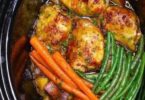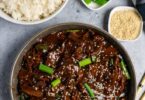In an increasingly carbohydrate-conscious world, a ketogenic diet may be the ultimate low-carb plan, and a great way to drop unwanted pounds. Dieters eat primarily meats, fish, eggs, cheeses, nuts, oils, and fibrous vegetables. However, because of its restrictive nature, many people find the diet difficult to stick to long-term. So what are the 14 worst foods to eat on a ketogenic diet, and what can you eat as alternatives? Keep reading to find out.
1. Sugar: the Ultimate Diet-Wrecker
It should surprise nobody that sugar is off-limits on a ketogenic diet. Not only is sugar 100% carbohydrates, making it the ultimate keto diet-wrecker, but sugar also plays a role in obesity, diabetes and heart disease. It also causes tooth decay and can affect the immune system.
If you must have sweetener in your coffee, stevia is a viable alternative. With no calories or carbs, stevia doesn’t raise blood sugar. Plus, being 200 to 350 times as sweet as sugar, you don’t need a whole lot of it.
2. Bread: Keto No-No
Most ketogenic diet guidelines limit dieters to 50 grams of net carbs daily, while some restricting to under 20. With many types of bread coming in at 30 to 40 grams of carbohydrates per slice, it might be the ultimate keto no-no.
Try cauliflower bread for a versatile alternative. Rich in Vitamins C and K, cauliflower is high in fiber and full of antioxidants. You can customize the flavor, and it can be used for burger buns, toast, and even pizza dough. Recipes are readily available online
3. Pasta: Comfort Food and Diet Destroyer
Pasta might rank high on your list of comfort foods, but at around 30 grams of carbohydrates per 100 grams of traditional, unenriched macaroni, it’s another diet destroyer.
Pasta now comes in a multitude of keto-healthy varieties. Try shirataki noodles, also called miracle noodles, for a calorie-free treat. They soak up the flavor of whatever sauce they’re in, making them a great choice for pasta night.
4. Rice: King of Carbohydrates
Although rice comes in a multitude of varieties, they all have an overabundance of carbohydrates. In one cup of brown rice, you’ll get approximately 45 grams of total carbohydrates.
Butternut squash rice is a delicious alternative. Although it is may still be cutting it close to the carbohydrate limit for a ketogenic diet, it’s rich in potassium and magnesium as well as Vitamins A, C, E and B6. Just blend it in your food processor until it forms a rice-like consistency. It’s hearty and sweet, making it a satisfying addition to your keto diet.
5. Beans: Foods with Mixed Messages
While beans have many health benefits, their starchiness makes them keto-unfriendly. But not all beans are the same. Although those on a ketogenic diet should avoid pinto beans, kidney beans and black beans, other beans are more keto-friendly.
So what beans can you have? Try black soybeans. They have a nutty flavor, buttery texture, and are sweeter than yellow soybeans. Black soybeans contain all nine essential amino acids, and are also high in dietary fiber as well as numerous vitamins and minerals. They’re a versatile bean that can be added to salads, pureed into soups, or formed into patties for burgers. For the best nutritional value, use fresh soybeans rather than processed.
6. Potatoes: Blood Sugar Foe
Coming in at approximately 28 grams of carbohydrates for a medium baked potato, these tubers are a food to avoid on a ketogenic diet. Potatoes actually rank higher than white bread on the glycemic index, which measures the impact of food on blood sugar.
For a great mashed potato replacement, try mashed turnips. Not only do they have a great consistency, but they’re rich in antioxidants, fiber, iron, Vitamin C, calcium, and Vitamin K. If fries are what you’re craving, try celery root, which has only seven grams of net carbs in a 100-gram serving.
7. Oils: The Good and the Bad
Not all oils are created equal. Stay away from processed vegetable oils, safflower oils, hydrogenated oils, margarine and other trans fats. They’re culprits in coronary disease, high cholesterol, and increase the risk of cancer.
Instead, use extra virgin olive oil, which is flavorful and rich in antioxidants. Perfect for salad dressings and dips, EVOO can also be used in low-heat cooking. Other oils to consider are coconut oil, avocado oil, and sesame oil.
8. Wine and Beer: Carb Heavyweights
Your body may react differently to alcohol while on a ketogenic diet, so avoid it completely if possible. If you can’t, then at least skip carb-heavy wine and beer.
If you’re going to imbibe, stick with hard liquor. Unsweetened/unflavored liquors have zero net carbs. Just remember to stay away from mixers and liqueurs, which do have carbs.
9. Starchy Vegetables: Not All Veggies are Created Equal
A high starch content means high carbohydrates, so limit starchy vegetables. Veggies to avoid include corn, carrots, peas, and most root vegetables.
A good guideline to use is that lower-carb vegetables tend to be leafy and green. Better choices include kale, spinach, broccoli, zucchini, and asparagus. Have them with butter or a tasty, keto-friendly sauce.
10. Processed meats and cheeses: Not Your Friends
Avoid processed meats such as hot dogs, pre-packaged sausages, pre-packaged bologna, processed cold cuts, and any meats and cheeses that have preservatives and fillers.
Instead, ask at your favorite delicatessen. Many delis, even those in grocery stores, roast some of their own meats such as turkey and beef, making those items far better choices. Buy fresh, and stick with local, organic products when possible.
11. Condiments: Can a Little Really Hurt?
In some cases with condiments, a little really can hurt. Some of the worst offenders are ketchup, barbecue sauce, jam and maple syrup, with the latter two each averaging almost 70 net carbs per 100 grams.
Better choices include mayonnaise, guacamole, and soy sauce. Better yet, choose olive oil or coconut oil. Both have zero net carbs. Overall, choose your condiments carefully, and always read labels. Many condiments are full of sugar.
12. Soda: To Drink or Not to Drink
Let’s face it. Soda is bad for you. While sugar-sweetened sodas are loaded with carbohydrates and have essentially no nutritional benefit, their lower-calorie, diet alternatives are really no better, often increasing cravings for sweet foods.
Water is the recommended beverage on a ketogenic diet, but when you’re craving a sweet drink, try fresh-brewed iced tea sweetened with a drop of stevia. Tea has zero carbohydrates and is full of antioxidants. And if you’re not a fan of black tea, try iced tea made from green tea or even herbal teas.
13. Fruit: Sweet Treat or Diet De-railer?
As a child, you probably learned that fruit is good for you, but fruit is not always a great choice for those on ketogenic diets. Many fruits are high in sugar. And while apples and bananas are two of the most popular fruits in the U.S., they’re two of the worst foods to eat on a ketogenic diet. Other ketogenic forbidden fruits include grapes, oranges and grapefruit.
Avocados are a more keto-friendly choice. They’re lower in net carbs and known to improve heart health. Another option: grab a few berries. In small amounts, berries satisfy a sweet tooth and won’t wreck a ketogenic diet.
14. Milk: Is Milk Really So Bad?
Perhaps it’s not entirely fair to include milk on a list of worst foods for a ketogenic diet, but at about 12 grams of net carbs per eight-ounce serving, whole milk ranks high on the carbohydrate scale.
Still, the health benefits of whole milk may make it worth it. Milk is rich in calcium, phosphorus and potassium, as well as Vitamins A, D, and B12. It’s not only good for bone health but can fight inflammation. So if you really must have that glass of milk and you don’t mind maxing out your daily carbs, go ahead. Or for a healthy, satisfying alternative, try coconut milk, unsweetened almond milk or hemp milk.


Leave a Comment